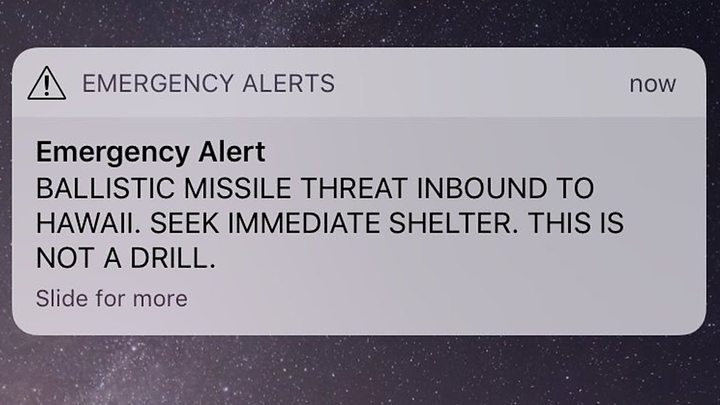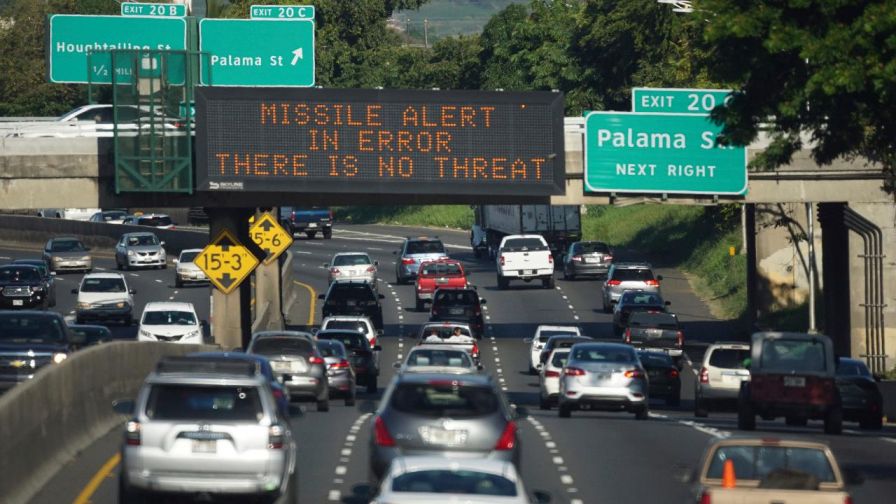hen MVHS alumna Anella Palacpac received an emergency alert on her phone at 1:07 p.m. on Jan. 13 in her dormitory at University of Hawaii in Manoa, fear shot up through her body. Immediately, she received a call from her father asking her what she was doing and if she was okay. As the minutes passed by, Palacpac and her roommate put some shoes, water bottles and their laptops into a bag in case disaster struck. After doing so, Palacpac and the other students were evacuated to a location in campus.
According to NBC, their was a mistake made by an official which triggered a chain of notifications to be sent out to many citizens in Hawaii. the alert warned all citizens about a missile that was coming into Hawaii and asked for the citizens to take shelter immediately.

The situation in Hawaii began when a government official accidentally sent out an alarm alerting Hawaiians about an oncoming missile. This notification caused a major confusion among Hawaiian residents who decided to frantically leave the city. After 38 minutes, the Hawaiian government sent a second notification, informing them of the mistake.
At the same time, math and computer science teacher Skip Mueller was sitting in the 18th floor of his hotel room with his family in Hawaii. When he heard the alarm, he was surprised but didn’t panic.
“It was a little bit different than, like I said, normal texts,” Mueller said. “I mean I’ve got to admit when I first looked at it, something about it struck me as a little funny. My first thought was [that] this [couldn’t be] real.”
According to NBC, within the span of 38 minutes from the first notification to the second one, there was a spark of fear amongst many Hawaiians, and many of them began to evacuate their homes. The delay in sending out the second message was ultimately a reason why there were so many people frantically trying to leave Hawaii and get to safety.
“I am just a little disappointed at how late the false alarm notification was sent,” Palacpac said. “I think it was 38 minutes or that is how long it took for them to send out the false alarm notification. And that could have been a difference between chaos and relief. I could imagine the feeling of being completely packed because everyone just wants to get to safety.”
When describing her situation, Palacpac mentioned how she was very afraid during the entire procedure.
“Basically the entire time that I was packing my bag, I was pretty much shaking because I have never felt this much fear in my life,” Palacpac said. “All that I was worried about was my safety and the safety of my family and my roommate and all the students on campus.”
As many Hawaiians were preparing to brace themselves, sophomore Surya Dantuluri was following the entire incident on Twitter. He saw a lot of tweets come in on his laptop about the alarm, and how it was causing chaos in Hawaii.
“I was going on Twitter and all of a sudden there was a lot of tweets were being posted about how there was some false alarm in Hawaii,” Dantuluri said. “I also heard that an alarm of nuclear threat, they didn’t know if it was a false alarm but until an hour later a bunch of tweets were talking about how it was a false alarm.”
Twitter was also a resource through which Mueller’s wife found out about the news of the false alarm
“My wife [was] just looking anywhere to see if there is any information but for a few minutes finding nothing,” Mueller said. “But what she didn’t tell me was somewhere around five minutes, there was a Hawaiian congresswoman in Washington who send out something on Twitter.”
HAWAII – THIS IS A FALSE ALARM. THERE IS NO INCOMING MISSILE TO HAWAII. I HAVE CONFIRMED WITH OFFICIALS THERE IS NO INCOMING MISSILE. pic.twitter.com/DxfTXIDOQs
— Tulsi Gabbard (@TulsiGabbard) January 13, 2018
After the situation was under control, many people questioned the actions taken by the Hawaiian government in terms of safety. According to The New York Times, the Hawaiian government has installed a new system that asks for the verification of two people before sending out an alarm.
“Many students said that this was a false drill and it was confirmed by an Hawaii government official or something,” Palacpac said. “I guess I was relieved because I didn’t know what else to expect from that day and what else was going to happen. I was just relieved and my heart stopped beating so fast and I never felt like that before.”










